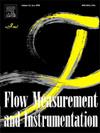Assessing the stage-discharge relationship of streamlined-type weirs
IF 2.3
3区 工程技术
Q2 ENGINEERING, MECHANICAL
引用次数: 0
Abstract
The flow stage-discharge relationship (SDR) of weirs is a well-studied hydraulic topic that is generally concerned with energy considerations and using a discharge coefficient. In this context, dimensional analysis and self-similarity theory are alternative theoretical methods to obtain accurate stage-discharge curves. In this paper, the SDR of streamlined-type weirs (streamlined SLW, hydrofoil HW, and modified semi-cylindrical MSCW) is theoretically deduced using dimensional analysis and the self-similarity condition. These new SDRs are estimated using experimental results from the literature. For the SLW, the analysis demonstrated that the new SDR gives discharge estimates similar to those obtained by the theoretical equation proposed by Carollo and Ferro (2021). For the HW, the SDR, calibrated by the measurements of Soydan Oksal et al. (2021), results in errors always less than the accuracy limit of ±5 %. Furthermore, for the same geometric parameters and upstream water level, the analysis pointed out that a HW flows a discharge higher than that corresponding to a SLW. For the MSCW, the SDR, calibrated by the measurements of Afaridegan et al. (2023), results in errors lower than or equal to ±3 % in 95.6 % of cases. Thereby, for SLW, HW, and MSCW, the developed analysis showed that the proposed SDR results in errors in discharge estimates always less than those obtained for the literature solutions. Finally, a single SDR, useful for all streamlined-type weirs, was also determined, and it results in errors lower than or equal to ±5 % for 96.1 % of cases and lower than or equal to ±3 % for 76.6 % of cases.
流线型堰级流量关系评价
堰的流级-流量关系(SDR)是一个研究得很好的水力课题,通常涉及能量考虑和流量系数的使用。在这种情况下,量纲分析和自相似理论是获得准确的阶段放电曲线的替代理论方法。本文利用量纲分析和自相似条件,从理论上推导了流线型堰(流线型SLW、水翼型HW和改进型半圆柱形MSCW)的SDR。这些新的特别提款权是根据文献中的实验结果估计的。对于SLW,分析表明,新的SDR给出的放电估计与Carollo和Ferro(2021)提出的理论方程相似。对于HW, SDR,由sodan Oksal等人(2021)的测量校准,结果误差总是小于±5%的精度限制。此外,在相同几何参数和上游水位的情况下,分析指出高水闸的流量高于低水闸的流量。对于MSCW,通过Afaridegan等人(2023)的测量校准的SDR在95.6%的情况下误差小于或等于±3%。因此,对于SLW、HW和MSCW,开发的分析表明,所提出的SDR导致的流量估计误差始终小于文献解决方案的误差。最后,还确定了适用于所有流线型堰的单一SDR,其误差在96.1%的情况下小于等于±5%,在76.6%的情况下小于等于±3%。
本文章由计算机程序翻译,如有差异,请以英文原文为准。
求助全文
约1分钟内获得全文
求助全文
来源期刊

Flow Measurement and Instrumentation
工程技术-工程:机械
CiteScore
4.30
自引率
13.60%
发文量
123
审稿时长
6 months
期刊介绍:
Flow Measurement and Instrumentation is dedicated to disseminating the latest research results on all aspects of flow measurement, in both closed conduits and open channels. The design of flow measurement systems involves a wide variety of multidisciplinary activities including modelling the flow sensor, the fluid flow and the sensor/fluid interactions through the use of computation techniques; the development of advanced transducer systems and their associated signal processing and the laboratory and field assessment of the overall system under ideal and disturbed conditions.
FMI is the essential forum for critical information exchange, and contributions are particularly encouraged in the following areas of interest:
Modelling: the application of mathematical and computational modelling to the interaction of fluid dynamics with flowmeters, including flowmeter behaviour, improved flowmeter design and installation problems. Application of CAD/CAE techniques to flowmeter modelling are eligible.
Design and development: the detailed design of the flowmeter head and/or signal processing aspects of novel flowmeters. Emphasis is given to papers identifying new sensor configurations, multisensor flow measurement systems, non-intrusive flow metering techniques and the application of microelectronic techniques in smart or intelligent systems.
Calibration techniques: including descriptions of new or existing calibration facilities and techniques, calibration data from different flowmeter types, and calibration intercomparison data from different laboratories.
Installation effect data: dealing with the effects of non-ideal flow conditions on flowmeters. Papers combining a theoretical understanding of flowmeter behaviour with experimental work are particularly welcome.
 求助内容:
求助内容: 应助结果提醒方式:
应助结果提醒方式:


